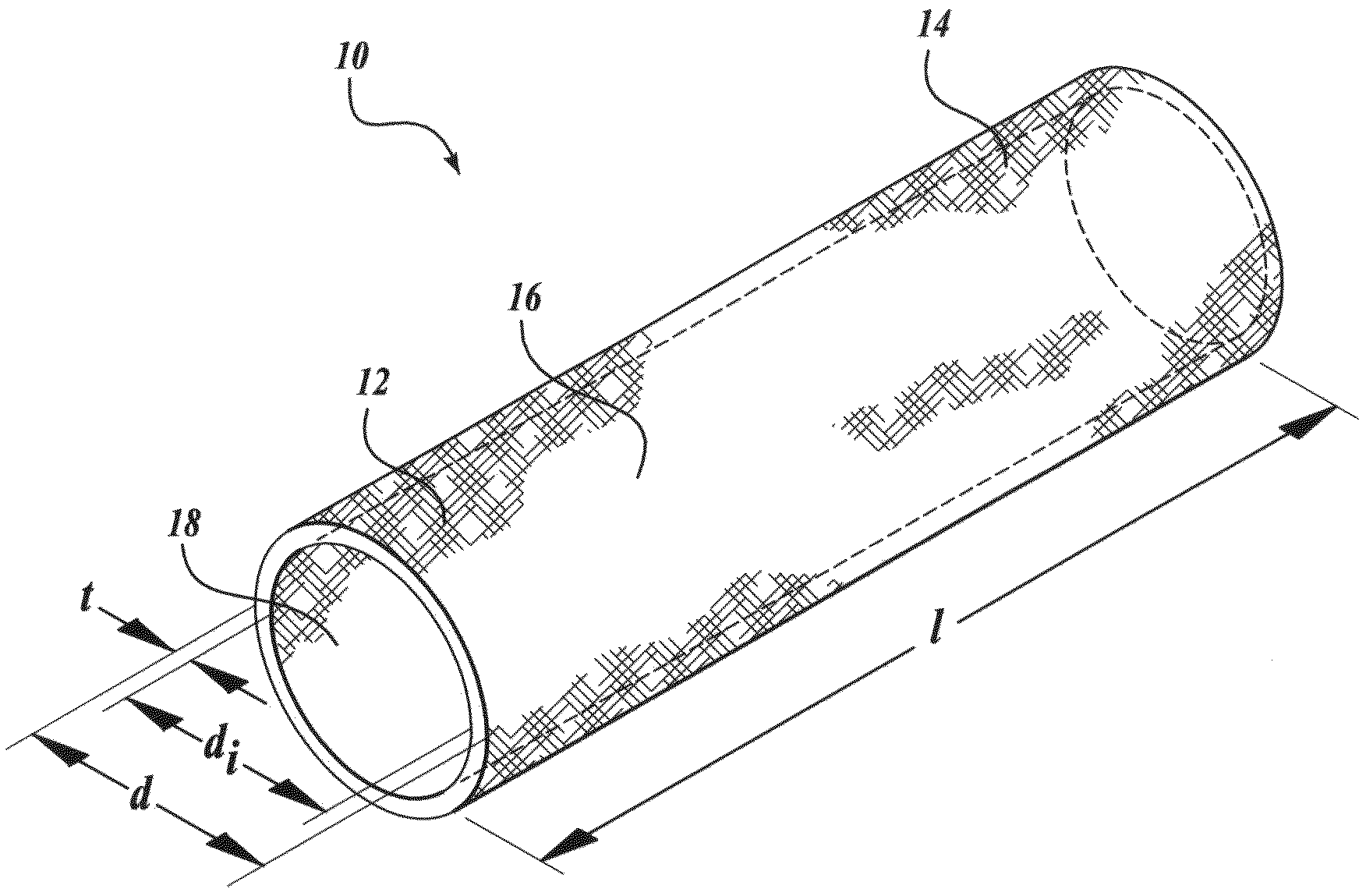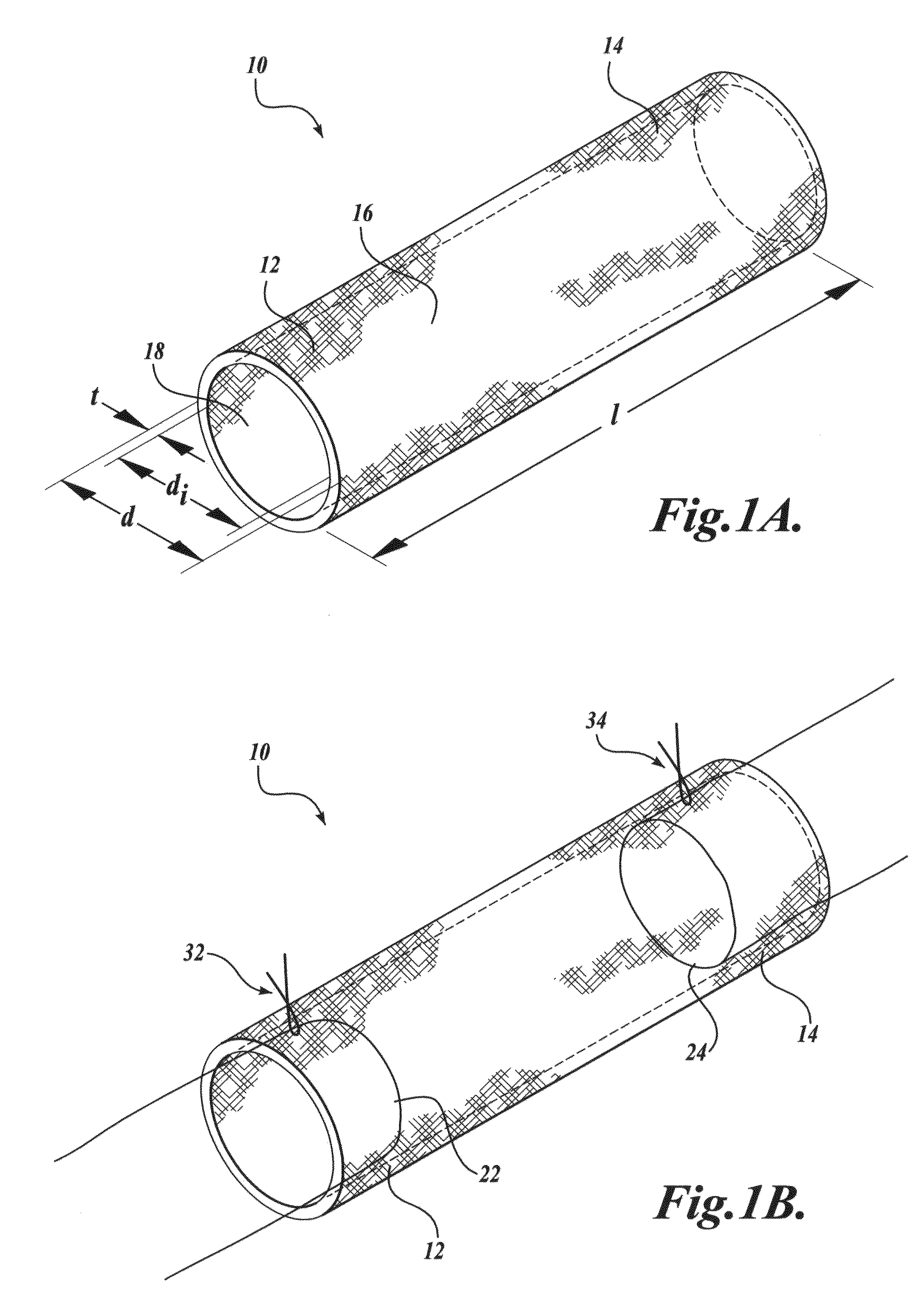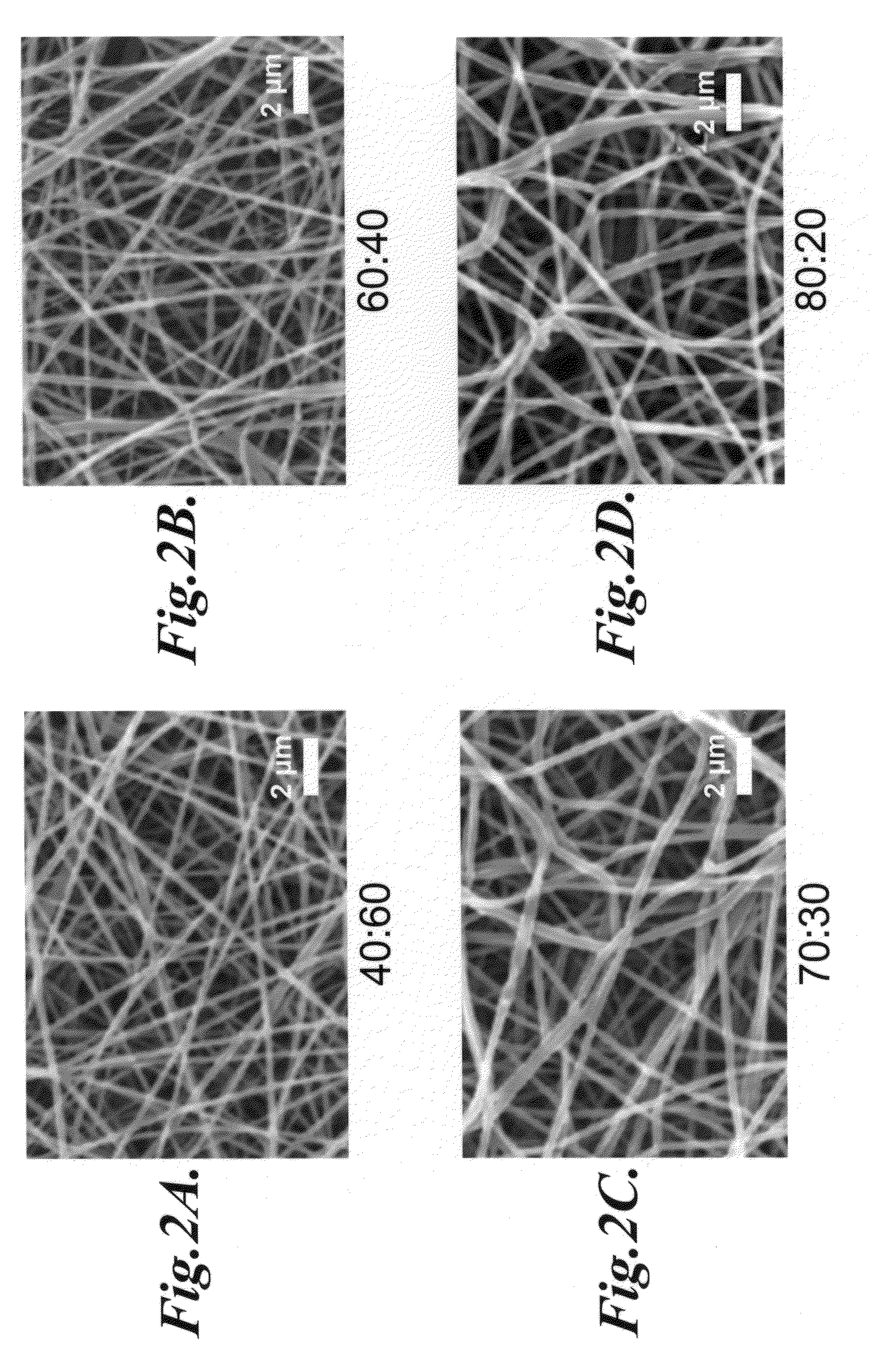Nanofibrous conduits for nerve regeneration
a technology of nanofibers and conduits, applied in the field of nanofiber conduits for nerve regeneration, can solve the problems of poor mechanical strength of poorly blended polymeric nanofibers, uncontrollable material properties, and a great challenge in the development of well-blended natural-synthetic composite polymers
- Summary
- Abstract
- Description
- Claims
- Application Information
AI Technical Summary
Benefits of technology
Problems solved by technology
Method used
Image
Examples
example 1
The Preparation of Representative Chitosan-PCL Nanofibrous Conduits
[0066]In this example, the preparation of representative chitosan-PCL nanofibrous conduits of the invention by electrospinning is described.
[0067]5 wt % chitosan (medium molecular weight chitosan from Sigma Chemical Co., viscosity 200-800 cP in 1% acetic acid, deacetylation of 75-85%) solutions were prepared at elevated temperature which weakens intermolecular forces between polymer chains and increases the solution solubility. The chitosan was fully dissolved by refluxing the chitosan / TFA mixture for 3 h at 80° C. 10 wt % PCL (Sigma Chemical, Co., Mn 70-90 kDa) solutions were prepared by dissolving PCL in TFE (Sigma). The two solutions were mixed at varying weight ratios of chitosan:PCL and vortexed for two minutes. Acidic hydrolysis of the PCL by TFA limits the lifespan of the mixture for electrospinnability to about one hour after component mixing, requiring component mixing immediately prior to the electrospinnin...
example 2
The Preparation of Chitosan-PCL Cast Conduits
[0070]In this example, the preparation of chitosan-PCL cast conduits are described.
[0071]The solvent cast conduits were prepared by dip coating. A 16 g needle was dipped into the chitosan-PCL mixture, allowed to dry at room temperature (5 min), then heated to 60° C. (15 min). This coating process was repeated several times depending on the thickness of the conduit to be made. The samples were heated to 60° C. for 2 hours, cooled to −20° C. for 30 min, and then warmed to room temperature. The tube was then removed from the needle and stored under ambient conditions prior to use.
example 3
The Preparation of Comparative Nanofibers and Films
[0072]In this example, the preparation of other nanofibers and films for comparison to representative chitosan-PCL nanofibers and structures of the invention are described.
[0073]PLGA and PCL nanofibers, and chitosan-PCL films were prepared for comparison to chitosan-PCL nanofibers. 7 wt % PLGA and 10% PCL were dissolved in DMF and TFE, respectively. Prior to spinning, the PLGA solution was diluted by 40 wt % DMSO. For chitosan-PCL film, 2 wt % PCL and chitosan solutions were prepared in TFE and TFA, respectively. A 40:60 chitosan-PCL solution was prepared and vortexed for 2 min. A 200 μL solution was deposited on 12 mm round cover slips and spin coated at 500 rpm for 30 seconds. After coating, the spinning was continued at 1000 rpm for one minute to remove excess solution and expedite solvent evaporation. After drying, the film was neutralized with 14% ammonium hydroxide for 15 min and rinsed with copious amounts of DI water to remo...
PUM
| Property | Measurement | Unit |
|---|---|---|
| Length | aaaaa | aaaaa |
| Fraction | aaaaa | aaaaa |
| Percent by mass | aaaaa | aaaaa |
Abstract
Description
Claims
Application Information
 Login to view more
Login to view more - R&D Engineer
- R&D Manager
- IP Professional
- Industry Leading Data Capabilities
- Powerful AI technology
- Patent DNA Extraction
Browse by: Latest US Patents, China's latest patents, Technical Efficacy Thesaurus, Application Domain, Technology Topic.
© 2024 PatSnap. All rights reserved.Legal|Privacy policy|Modern Slavery Act Transparency Statement|Sitemap



